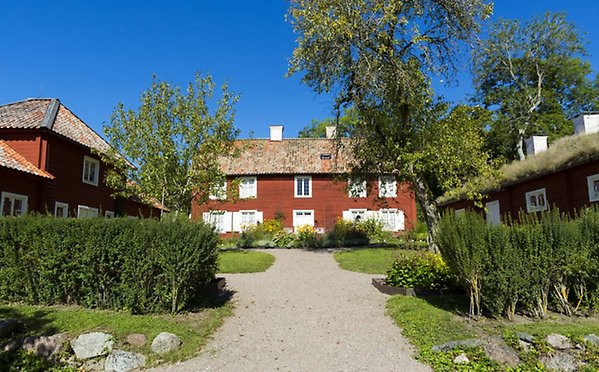Linnaeus' Hammarby
History
Carl von Linné, professor of botany and medicine at Uppsala University between the years 1741 and 1778, acquired the country estate Hammarby outside Uppsala in the fall of 1758. The family stayed there during the summer until Linné's death in 1778 when the building became the permanent residence of his widow Sara Elisabeth von Linné.
At Hammarby there are a number of objects connected to the Linné family. A significant portion of the inventory and artworks has been housed there since the days of Linnaeus, while other items were acquired by the family after his death. Objects with a Linnaean connection have also been acquired in recent times through gifts from relatives or through purchase. The farm was in the family's possession until the Swedish state took it over in 1879.
Linnaeus' Hammarby today
Today, Linnaeus' Hammarby, together with the Botanical Garden and the Linnaeus garden, constitute the Linnaean Gardens. These activities are run by Uppsala University with a grant from Uppsala Municipality. Hammarby has been a national building monument since 1935 and is managed by the National Property Board (SFV). In 2007, Hammarby with its surrounding farmland and forest became a cultural reserve, which is managed by the County Administrative Board (Länsstyrelsen) and the Swedish University of Agriculture (SLU).
Visit Linnaeus' Hammarby
Linnaeus' Hammarby is open to the public during the summer months.
Uppsala Linnaean Gardens - Linnaeus' Hammarby
Photography at Linnaeus' Hammarby
Photography in the residential building at Linnaeus' Hammarby is not permitted without permission.
Contact details
Questions regarding photography, art and inventory in Linnaeus' Hammarby can be directed to: artcollections@gustavianum.uu.se

The Linnaeus' Hammarby.
